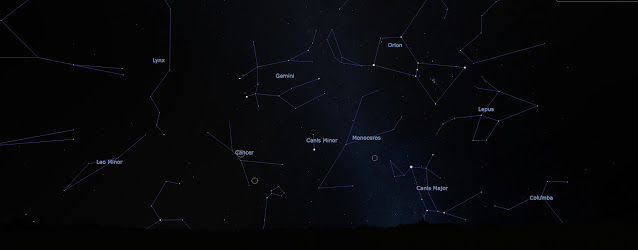Introduction and Monthly Reminders
December started off with cloudy skies, fog, rain, and snow over much of Utah. Of course, the precipitation is good for the state, but the cloudy skies prohibit astronomers from enjoying the wonders of the night sky. Through the break in the clouds, I could spot Jupiter, Saturn, and Mars, as well as view the brighter constellations like Orion, Taurus, Ursa Major, and Cassiopeia.
Observers will still be able to watch the Ursid Meteor Shower which peaks on the 23rd with a New Moon. Mars reached opposition a few short days ago and will still shine brightly in the night sky after sunset. Of course, many of the Messier objects mentioned will also be able to be viewed, if an observer can catch a break in the stormy weather.
Messier Targets 🔭
The Messier Catalog contains 110 objects to view throughout the year. Most of these objects require a telescope or a pair of binoculars. As with all DSOs, observing from a location with minimal light pollution will enhance your views. If using a telescope, I recommend using a low-power eyepiece to help find the object, then increasing the power to bring out more detail. So far, I have highlighted the Messier objects belonging to Hercules, Draco, Lyra, Serpens, Scorpius, Scutum, Ophiuchus, Sagittarius, Cygnus, Vulpecula, Aquarius, Andromeda, Cassiopeia, Capricornus, Cetus, Pegasus, Perseus, Triangulum, Orion, Gemini, Taurus, Auriga, and Pisces.
This December mid-month post will highlight the Messier objects belonging to Cancer the Crab and Monoceros. Both of these constellations can be found rising above the eastern horizon between 9:00 and 10:00 PM. The longer an observer waits, the higher these constellations will be in the night sky, providing a better view of the Messier objects associated with them. See the images below for what the night sky will look like at this time.
 |
| The night sky as an observer faces East during December. |
 |
| December night sky with constellation lines and labels. |
This post will begin its journey with Cancer the Crab which contains two Messier objects. The first is M44 (aka Beehive Cluster, NGC 2632) which is one of my favorite open star clusters. The Beehive Cluster can be found between the two stars that make up the body of Cancer. I recommend using a low-power, wide field-of-view eyepiece for this object which will allow more stars to be visible. See the image below for the location of M44.
The other Messier object in Cancer is M67 (aka Golden-Eye Cluster, Pac-Man Cluster, King Cobra Cluster, NGC 2682) which is also an open star cluster. This cluster is more compact than the Beehive Cluster and will allow an observer to use a higher-power eyepiece to "zoom" in on its stars. The Pac-Man Cluster can be found near the back, right leg of The Crab. See the image below for the location of M67.
We will end our journey this month in the constellation of Monoceros. Here, we can find M50 (aka Heart-Shaped Cluster, NGC 2323) another open cluster. Like the Pac-Man Cluster in Cancer, M50 can be viewed with a higher-powered eyepiece to "zoom" in on its stars. See the image below for the location of M50.
The images below can be used as a quick guide for finding the Messier objects discussed in this post.
 |
| Messier objects of Cancer and Monoceros. |
 |
| Messier objects of Cancer and Monoceros with constellation lines and labels. |
The January Monthly Night Sky Report will continue to highlight the Messier objects which are best viewed during the winter months. All of the above images were provided by Stellarium, a free planetarium software that can be found online, downloaded, or installed as an app on your favorite mobile device. My updated Messier list can be found here.




No comments:
Post a Comment